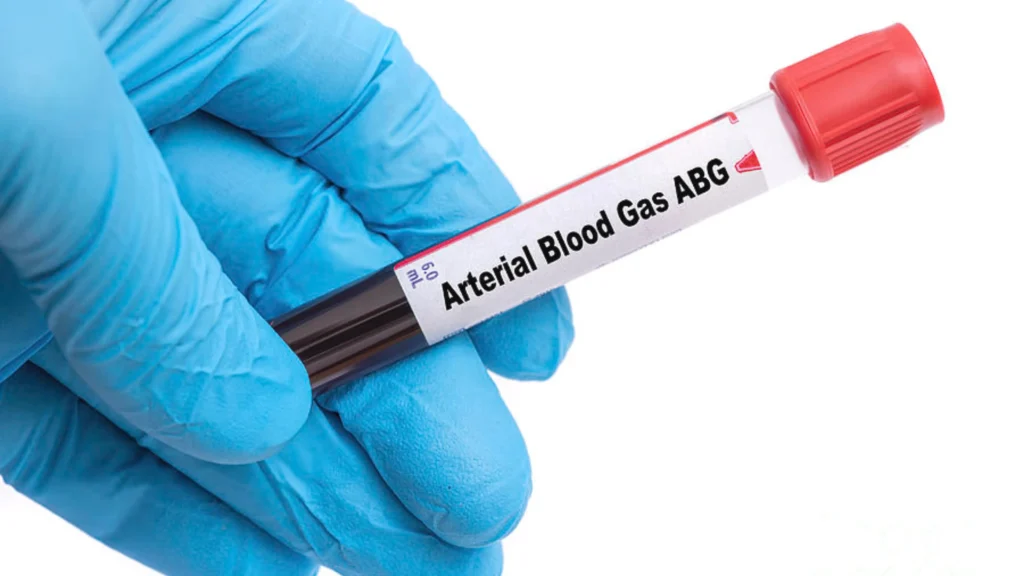
Imagine this: you or someone you love is suddenly short of breath, feeling dizzy, or just not quite right. The doctor recommends something called an arterial blood gas test—and it sounds complicated and scary at first. But don’t worry, you’re not alone.
The arterial blood gas test (often called an ABG test) is not just another routine test. It can actually be life-saving, especially during medical emergencies when doctors need quick answers about how your lungs and body are functioning.
In this blog, we’ll walk you through everything in a simple, friendly way—what the arterial blood gas test is, why doctors suggest it, how it’s done, what your results mean, and yes—whether it’s possible to get it done at home. Let’s make this medical jargon easy and human, together.
What Is an Arterial Blood Gas (ABG) Test?
A. Simple Explanation of the ABG Test
If your loved one is having trouble breathing or feels unusually tired and confused, one of the first things a doctor might ask for is an arterial blood gas test. Don’t let the name scare you—it’s simpler than it sounds.
An arterial blood gas test is a quick and powerful way to check how well your lungs are working. It measures three main things in your blood:
- The amount of oxygen (O₂) your body is getting
- The level of carbon dioxide (CO₂) it’s getting rid of
- The pH or acidity level of your blood
Why does this matter? Because these numbers tell your medical team if your lungs and kidneys are doing their job properly. It helps them decide things like:
“Do we need to give oxygen?” or “Is this patient’s breathing under stress?”
This test is especially helpful during emergencies, ICU care, or if someone has lung or kidney conditions.
Whether it’s a senior at home or someone recovering from a serious illness, the arterial blood gas test helps make faster and safer decisions.
B. How It Differs from a Regular Blood Test
Here’s the main difference: Regular blood tests are usually taken from a vein—like from your arm. But the arterial blood gas test is taken from an artery, usually in your wrist. Why? Because arteries carry fresh, oxygen-rich blood straight from your lungs to the rest of your body.
That’s what makes this test special—it gives real-time insights into your breathing and how your body is handling oxygen and carbon dioxide.
So, while a normal blood test might check your sugar or cholesterol levels, the arterial blood gas test looks much deeper. It tells you how well your body is staying in balance—and how urgently you might need medical help.
Why Doctors Recommend an Arterial Blood Gas Test
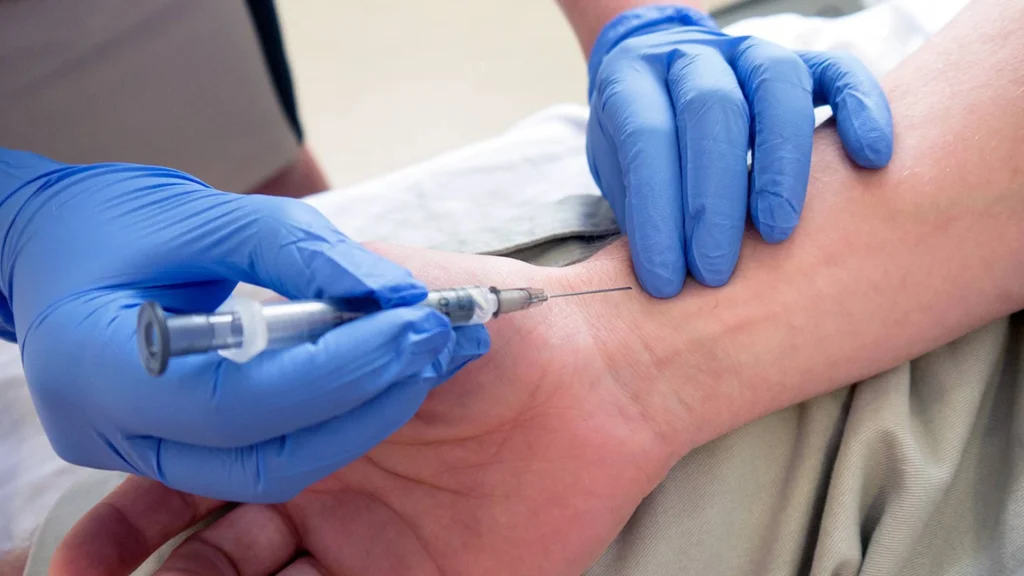
When someone you love is struggling to breathe, every moment counts. That’s why doctors often turn to an arterial blood gas test—it gives them fast, reliable answers about what’s happening inside the body. Let’s break down when and why this test becomes so important.
1. To Check Oxygen and Carbon Dioxide Levels
One of the most common reasons for an arterial blood gas test is to check how much oxygen your body is getting and how well it’s removing carbon dioxide. This becomes critical when someone has:
- Sudden breathlessness
- Asthma attacks
- COPD flare-ups
- Or is already in the ICU
By measuring these levels, doctors can tell if the lungs are struggling and if immediate help—like oxygen or ventilation—is needed. It can even prevent life-threatening complications just in time.
2. To Evaluate Blood pH and Acid-Base Balance
Our body needs the right pH balance to function well. Not too acidic. Not too alkaline. The arterial blood gas test shows this balance clearly.
If the blood is too acidic (acidosis) or too alkaline (alkalosis), it could point to serious problems in the lungs, kidneys, or metabolism.
For example:
- In diabetes, this test helps catch a dangerous condition called ketoacidosis.
- In lung disease, it reveals whether breathing is failing to remove enough CO₂.
Knowing the blood’s acid-base status helps doctors choose the right treatment—fast and accurately.
3. To Monitor Severe Illnesses
In critical care settings like:
- ICU
- Emergency surgeries
- Severe trauma
- Or during ventilator support
…the arterial blood gas test becomes a must. It gives doctors a real-time status of how the patient’s lungs and body are coping. A small change in these results can signal a big change in the patient’s condition.
This test is like a guiding light for the medical team, especially when the situation is serious and time is short.
4. To Decide on Oxygen or Ventilator Support
Is your loved one getting too little oxygen… or maybe too much? Are they retaining CO₂ because they’re not exhaling well?
The arterial blood gas test answers all these questions. It guides the doctor in deciding:
- Whether oxygen therapy is working
- If ventilator settings need to be adjusted
- Or whether advanced support is needed
It’s not just about numbers—it’s about making sure the patient is safe, stable, and supported every second.
Common Conditions Where ABG Is Ordered
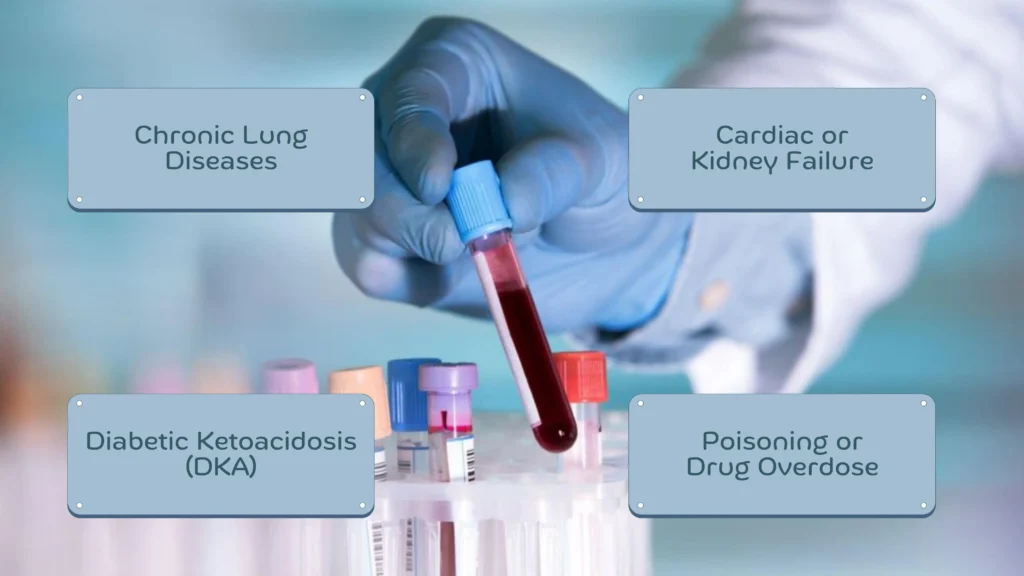
When someone is seriously unwell—struggling to breathe, losing consciousness, or dealing with multiple health issues—one of the most trusted tools doctors turn to is the arterial blood gas test. Why? Because it gives quick and accurate information about what’s going wrong inside the body. Let’s look at the most common conditions where this test becomes crucial.
1. Chronic Lung Diseases
If your loved one has COPD, asthma, or interstitial lung disease, you’ve probably heard about the arterial blood gas test more than once. These conditions affect the lungs’ ability to take in oxygen and remove carbon dioxide.
When symptoms like breathlessness, chest tightness, or confusion appear, the ABG test helps answer:
- Is oxygen therapy working?
- Is CO₂ building up dangerously?
- Do we need to change medications or support?
With conditions that can silently worsen, the arterial blood gas test gives early warnings—and a chance to act before things get critical.
2. Cardiac or Kidney Failure
In patients with heart failure or chronic kidney disease, the body’s acid-base balance often goes off track. This isn’t something you can see from the outside. But the patient may feel weak, tired, dizzy—or just “not right.”
That’s where the ABG comes in. It checks:
- Whether the blood is too acidic (acidosis) or too alkaline
- How well the organs are maintaining balance
- If immediate treatment is needed to restore stability
In kidney failure, this test is sometimes the first clue that dialysis might be necessary.
3. Diabetic Ketoacidosis (DKA)
If someone with diabetes suddenly becomes drowsy, breathes heavily, or starts vomiting, Diabetic Ketoacidosis (DKA) might be the reason. It’s a dangerous condition where the blood becomes acidic due to a lack of insulin.
In such moments, the arterial blood gas test helps:
- Confirm the diagnosis quickly
- Understand how severe the acidosis is
- Guide life-saving treatments like fluids and insulin
Time is everything in DKA—and the ABG test can help doctors act fast.
4. Poisoning or Drug Overdose
Sadly, cases of accidental poisoning or drug overdose are becoming more common. Whether it’s a child who swallowed something toxic or an adult who took the wrong medication, the arterial blood gas test helps doctors understand what’s happening deep inside the body.
It reveals:
- How badly the body’s oxygen and pH levels are affected
- Whether the lungs or kidneys are under stress
- What kind of support or antidote might be needed
In emergencies like these, the ABG acts as a compass, guiding the medical team toward the right decisions.
What Happens During the Test?
If a doctor recommends an arterial blood gas test, it’s normal to feel a little nervous—especially if you’ve never had one before. But understanding what to expect can make the experience much smoother and less stressful. Let’s break it down step-by-step.
A. How the Sample Is Collected
Unlike a regular blood test taken from a vein, the arterial blood gas test requires blood from an artery. That’s because arteries carry freshly oxygenated blood, which helps measure oxygen, carbon dioxide, and pH levels more accurately.
- Most common site: The wrist, specifically the radial artery
- Other options: Elbow crease (brachial artery) or groin area (femoral artery), depending on the patient’s condition
A trained professional first checks the blood flow using a simple test (called the Allen test), then cleans the area and uses a small needle to draw blood. It usually takes just a few minutes.
B. Is the Test Painful or Risky?
Let’s be honest—it’s a little more uncomfortable than a regular blood draw.
Since arteries are deeper and have more nerve endings, you may feel:
- A sharp pinch or pressure during the prick
- Some bruising or soreness afterward
But the good news? The pain is brief and goes away quickly. Most people say it’s manageable, especially when done by an experienced technician. In rare cases, there might be minor swelling or a small clot, but serious complications are extremely rare.
C. How Long It Takes and When Results Are Available
The actual collection part takes 2–5 minutes at most. What happens next?
- In hospital settings, results are typically ready within 15–30 minutes
- In home care services or labs, it might take a bit longer, depending on the setup
The arterial blood gas test is often used in emergencies because it gives fast, real-time information about the body’s oxygen and acid-base balance. It can guide treatment decisions immediately.
Understanding Your ABG Results
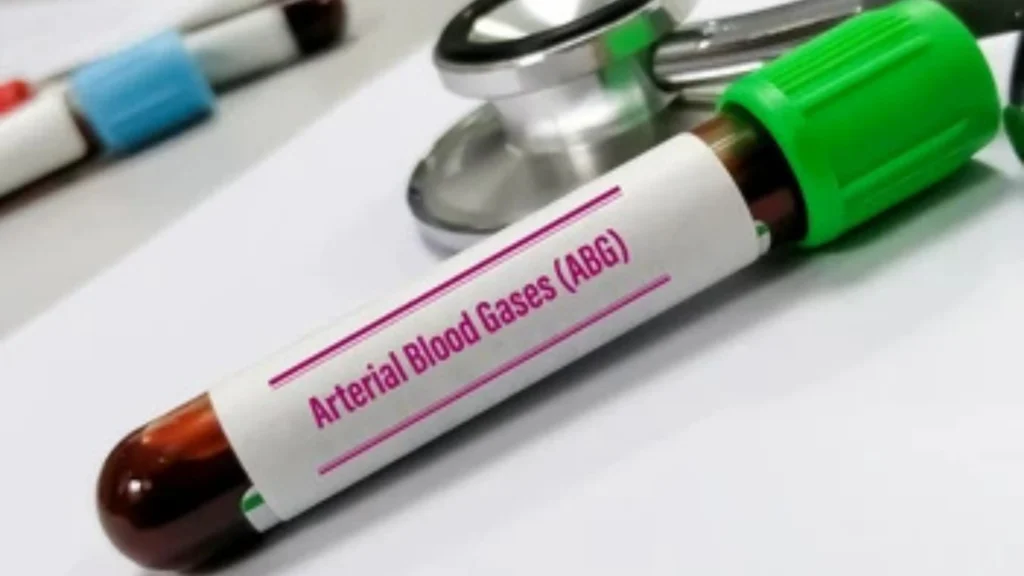
So, you’ve done the arterial blood gas test, and now you’re looking at a report filled with numbers and abbreviations. Don’t worry—you’re not alone. These results may look complex at first, but understanding the basics can help you feel more in control of your health or your loved one’s condition.
A. Key Values Measured
The arterial blood gas test checks how well your lungs are bringing in oxygen and removing carbon dioxide. It also shows how well your body is maintaining a healthy acid-base balance.
Here are the main values you’ll see:
- pH: Tells if your blood is too acidic or too alkaline
- PaO₂ (Partial pressure of oxygen): How much oxygen is in your blood
- PaCO₂ (Partial pressure of carbon dioxide): Measures carbon dioxide levels
- HCO₃ (Bicarbonate): Reflects the metabolic component of acid-base balance
- O₂ Saturation: Percentage of hemoglobin carrying oxygen
These numbers are like a window into how your lungs, kidneys, and heart are working together.
B. What Abnormal Results Might Mean
It’s easy to feel anxious when you hear words like “low oxygen” or “acidosis.” But each value gives doctors clues about what’s going on and how to treat it.
Here’s what some common abnormalities may suggest:
- Low pH (acidic): Could mean acidosis—your body is holding too much acid
- High PaCO₂: May point to respiratory failure or shallow breathing
- Low PaO₂ or O₂ Saturation: Indicates low oxygen levels, possibly due to lung issues
- High HCO₃: Might suggest your body is trying to compensate for chronic problems like COPD
But remember—numbers alone don’t define your condition. Doctors always look at these values alongside your symptoms and medical history.
C. When to Worry and What Doctors Do Next
So when should you be concerned?
If the results show severe imbalances—like very low oxygen, extremely acidic blood, or high CO₂ levels—doctors may take immediate action. That might include:
- Adjusting oxygen support
- Starting IV fluids or electrolytes
- Changing medications or ventilation settings
The best part? The arterial blood gas test helps catch problems early—sometimes before symptoms even show up. That’s why it’s often used in ICUs, during emergencies, or for home care monitoring in serious conditions.
Can You Get an Arterial Blood Gas Test at Home?
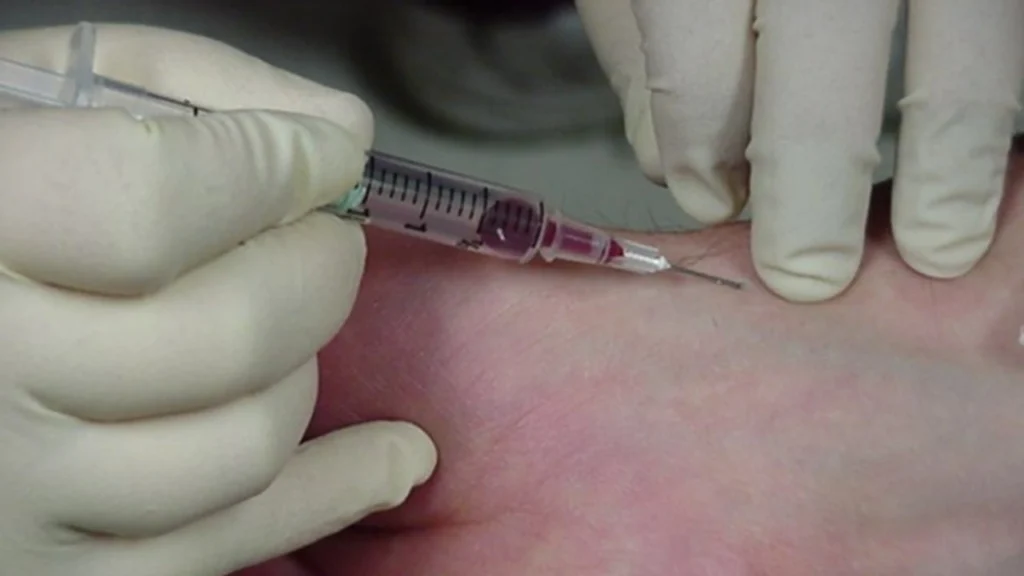
The thought of rushing to a hospital for every test can feel exhausting—especially when your loved one is already struggling to breathe or rest. Thankfully, getting an arterial blood gas test at home is now possible in many cities.
Let’s see how it works, who can get it, and why it might be the safer and smarter choice.
When Home Collection Is Possible
In today’s world, advanced home healthcare services have made it easier to bring hospital-level care to your doorstep. In cities like Chandigarh, Mohali, and Zirakpur, trained professionals can now conduct an arterial blood gas test right in your home.
It’s especially helpful for patients who:
- Are on oxygen or ventilator support
- Have chronic lung or heart diseases
- Are elderly or bedridden
- Have mobility issues or high infection risk
How It Works and Who Performs It
When you book a home ABG test, a skilled nurse or paramedic arrives at your home—equipped with a portable ABG analyzer. Just like in a hospital, the blood is taken from an artery (usually in the wrist), and the results are available within minutes.
These healthcare workers are highly trained to:
- Choose the correct artery
- Handle the equipment safely
- Interpret and send your report to your doctor quickly
So, you get accurate, hospital-quality results—without stepping outside.
Benefits of Home ABG Testing
Choosing to do an arterial blood gas test at home comes with several big benefits:
- ✅ No travel stress – Ideal for seniors and oxygen-dependent patients
- ✅ Safer – Avoid exposure to hospital infections
- ✅ Faster decisions – Results in 15–30 minutes, so doctors can act quickly
- ✅ Comfort – Patients remain calm and relaxed in a familiar setting
If you’re caring for someone at home with breathing difficulties, chronic illness, or recent hospitalization, home-based ABG testing might give you the clarity and peace of mind you need—without the chaos of hospital visits.
Common Mistakes or Myths About ABG Testing
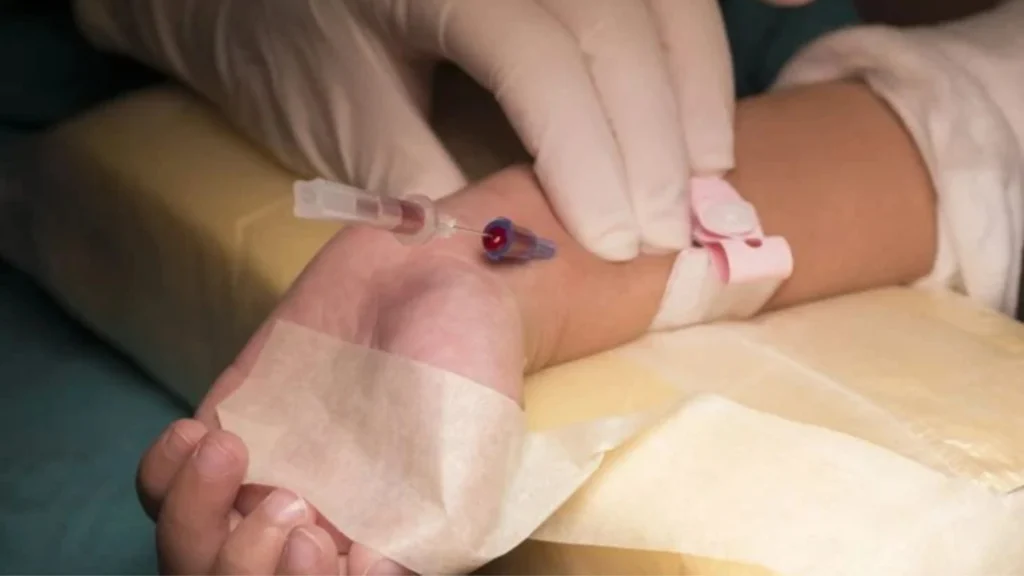
When it comes to something as serious as breathing, there’s no room for confusion. But sadly, many people misunderstand what an arterial blood gas test really is—or delay it when it’s most needed. Let’s clear up some common myths and mistakes so you can feel more confident and prepared.
1. Thinking It’s Just Like a Routine Blood Test
One of the biggest misconceptions is believing the arterial blood gas test is the same as a regular blood test. But it’s not.
Unlike routine blood tests that are taken from a vein, this one is taken directly from an artery. It checks how well your lungs are working and how your body is handling oxygen and carbon dioxide in real-time. That’s why it’s often used in emergencies or when someone is very sick. It’s a specialized test—and it gives doctors critical data fast.
2. Delaying the Test During Breathing Trouble
Another dangerous mistake is waiting too long to get the test done.
If someone is gasping, confused, or tired from breathing, don’t wait. These signs may mean the lungs are failing to keep the right balance of oxygen and carbon dioxide.
Delaying an arterial blood gas test in such moments can cause precious time to be lost. The sooner it’s done, the sooner treatment decisions (like oxygen changes or hospital admission) can be made.
3. Ignoring Results or Self-Interpreting
We all want to understand test results on our own—but ABG reports are not easy to read. Terms like pH, PaCO2, or HCO3 can be confusing, and misreading them may lead to unnecessary panic—or even wrong actions.
Always share the arterial blood gas test report with a qualified healthcare provider. They’ll help explain what’s going on and what steps are needed next. Guesswork or Google shouldn’t guide your health in such moments.
❤️ Final Thoughts
An arterial blood gas test may sound technical or even scary at first, but it’s actually one of the most powerful tools doctors use to make life-saving decisions—whether in an ICU or during a home care visit.
It checks how well your lungs and body are handling oxygen and carbon dioxide, and whether the blood is too acidic or too alkaline. These small details give big clues, especially when someone is struggling to breathe, feeling weak, or facing a serious health condition.
So if your doctor recommends an arterial blood gas test, take a deep breath—it’s often the first step toward the right treatment and peace of mind.
And now, thanks to trusted home care providers like VCare@Home, you can even get ABG testing done safely at home in Chandigarh, Mohali, and Zirakpur, without the stress of hospital visits.
Your health deserves clarity and comfort. And this test helps provide both.
Frequently Asked Questions (FAQs)
Q1: Is the ABG test painful?
Slightly. You may feel a brief sting, but it’s quick and safe.
Q2: Can I eat or drink before an ABG test?
Usually yes, but follow doctor instructions—some cases may need fasting.
Q3: How long does it take to get ABG results?
15–30 minutes in most labs or hospitals.
Q4: Can I do an ABG test at home?
Yes, with services like VCare@Home that offer nurse-assisted ABG collection.
Q5: What are normal ABG values?
Normal pH: 7.35–7.45, PaCO2: 35–45 mmHg, PaO2: 75–100 mmHg, HCO3: 22–26 mEq/L
Q6: Is ABG the same as pulse oximeter?
No. ABG gives deeper insights including acid-base balance—oximeters only show oxygen saturation.


























